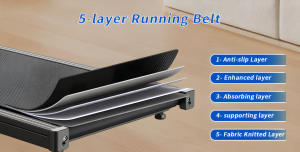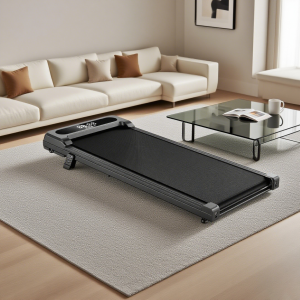Innovation Beneath Your Feet: Exploring the Mystery of the Elasticity of the running Board and How It Quietly Transforms Every Step You Take
When you step onto the treadmill and start a run or walk, a complex and exquisite interaction begins. This is not merely a mechanical repetition between the feet and a machine; it is a dialogue concerning physical sensations. And the most important participant in this conversation is the seemingly ordinary running board beneath your feet. Modern technology’s exploration of the material of running plates has far exceeded the simple definitions of “hard” or “soft”, and has delved into a more core dimension: intelligent elasticity.
From Hard Impact to Dynamic Response: The Logic of the Evolution of Running boards
The original treadmill running board was mainly designed to provide a sturdy and durable flat surface. But people soon discovered that running continuously on a surface as hard as cement would impose a burden on joints such as knees and ankles due to the impact force. Thus, the concept of “shock absorption” came into being. However, simply “softening” is not the best answer. A surface that is too soft will consume energy, making every step feel like walking on sand. Running becomes strenuous and is more likely to cause fatigue.
The real breakthrough comes from a shift in thinking: running the board should not merely be a passive recipient, but an active responder. The application of high-tech materials aims precisely to create a kind of “dynamic elasticity”. This elasticity is no longer uniform softness, but an intelligent response that imitates high-quality outdoor ground, such as professional running tracks or elastic soil. It can effectively disperse the impact force through a slight deformation at the moment the foot lands. And when you step off the ground and start, it will return some energy to help you take the next step more effortlessly and smoothly.
The gift of materials Science: The microscopic World of elasticity
This ideal dynamic elasticity is attributed to the development of materials science. Engineers are no longer confined to a single material but construct a microscopic elastic system by combining multiple layers of materials with different properties.
For instance, the base structure of some running plates is responsible for providing stable support to ensure the stability of operation. The middle layer may be made of materials with a special polymer structure, which is like a dense matrix filled with air. When subjected to pressure, it can achieve multi-point and uniform deformation, avoiding stress concentration. The topmost material takes into account both wear resistance and appropriate friction to ensure safety. These layers work together to create a “cushioning” effect on the treadmill in the vertical direction while maintaining sufficient rigidity in the horizontal direction to propel the body forward.
The subtlety of this elasticity lies in the control of its “degree”. It offers not a sagging depression but a full and solid sense of support. Your joints will feel the pressure being gently relieved, while your muscles will sense a slight boost from the running board, as if the running board is working in perfect harmony with your feet.
Beyond Shock Absorption: How Elasticity Enhances the Sports Experience
A running board with intelligent elasticity offers benefits far more than just protecting joints. It is actually redefining the indoor running experience.
First of all, it makes running more efficient. With each kick, the appropriate rebound force of the running board is transformed into a subtle boost, reducing energy loss and allowing you to focus more on the rhythm of your steps and the coordination of your breathing, thereby extending the duration of comfortable exercise. Secondly, it greatly enhances the pleasure of exercise. Stepping on the elastic running board, one feels a gentle and bouncy sensation underfoot, rather than a harsh impact. This pleasant feeling in the feet can relieve mental fatigue and turn running from a dull task into a physical enjoyment.
More importantly, this tailor-made underfoot experience can help you focus more fully on running itself, reduce the thought of giving up prematurely due to discomfort, and thus better stick to your exercise plan.
Choose the running board: Listen to the sound of your body
Therefore, when you are choosing a treadmill for your family, in addition to paying attention to its functions and size, be sure to personally experience the elasticity of the treadmill. Stand on it, take a few steps, or even jog a little. Pay attention to your joints: Do your knees and ankles feel well cushioned? Pay attention to your muscles: Do you feel your steps are light and effortless? Pay attention to your overall feeling: Is the feedback under your feet stiff and empty, or full of vitality?
A running board made of high-tech materials is valuable because it knows how to coexist harmoniously with your body. It works silently, and each deformation is a precise calculation and response. It is not merely a component of the treadmill, but also a considerate companion on your health journey. With just the right elasticity, it protects every move you make, ensuring that every step you take indoors is on top of the futuristic feel where comfort and technology interweave.
Post time: Sep-26-2025



